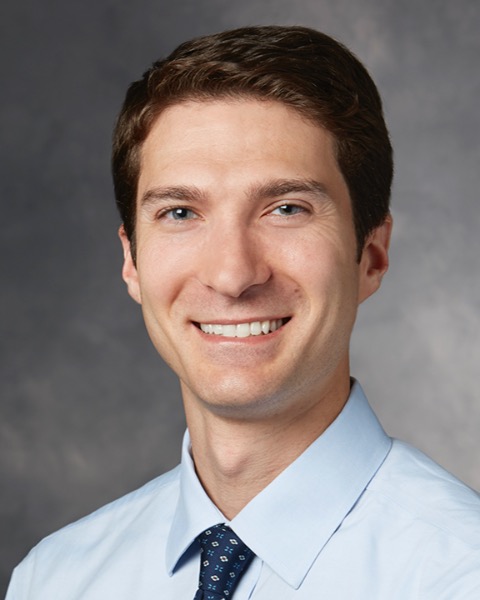Back
HPB
Session: HPB Parallel Session 1
41: Radiographic, Biochemical, or Pathologic Response to Neoadjuvant Chemotherapy in Resected Pancreatic Cancer: Which Is Best?
Thursday, March 10, 2022
3:51 PM – 3:59 PM CST
Location: Chantilly East

Chris Javadi, MD, PhD
Fellow
Stanford
Stanford, California, United StatesDisclosure: I do not have any relevant financial / non-financial relationships with any proprietary interests.
Abstract Presenter(s)
Participants should be aware of the following financial/non-financial relationships:
Chris Javadi, MD, PhD: I do not have any relevant financial / non-financial relationships with any proprietary interests.
Introduction: Response to neoadjuvant therapy for pancreatic ductal adenocarcinoma (PDAC) can be assessed by radiographic (change in tumor size), biochemical (change in CA 19-9), and pathologic parameters (tumor regression grade, TRG). However, the relative prognostic significance of each type of response in comparison to the other two remains unclear. This study compared the individual and collective ability of these 3 types of response in predicting survival after neoadjuvant therapy and resection of PDAC.
Methods: Patients who underwent neoadjuvant chemotherapy and PDAC resection at a single institution were retrospectively analyzed. Several thresholds for radiographic, CA19-9, and pathologic response were assessed and compared to each other. Overall survival (OS) was calculated with the Kaplan–Meier method and compared with log rank and Cox proportional hazard methods.
Results: From 2011 to 2021,146 patients with PDAC received neoadjuvant chemotherapy (Folfirinox, n=101; Gem-nab paclitaxel, n=30; other, n=15) followed by surgical resection. Thirty patients (21%) also received neoadjuvant radiation. Median OS from initiation of chemotherapy was 53 months. Longer OS was observed in patients with a CA19-9 decrease > 25% (NR vs 23 mos, p< 0.0001, Figure 1A), a TRG score of 2 or less (53 vs 28 mos, p< 0.001, Figure 1B), or a decrease in radiographic tumor size > 50% (NR vs. 35 mos, p=0.034, Figure 1C). Interestingly, a RECIST radiographic response (decrease in tumor size > 30%) was not predictive of OS. In multivariate analysis, CA 19-9 decrease > 25% was independently associated with OS (HR=0.36, p=0.026), whereas pathologic (p=0.074) and radiographic responses (p=0.16) were not. OS was optimal in the presence of all 3 types of response (Figure 1D) and intermediate in the presence of CA19-9 response with or without an additional type of response.
Conclusions: Pancreatic cancer patients with simultaneous radiographic, biochemical, and pathologic response to neoadjuvant chemotherapy have very favorable prognosis. In the absence of concordance between the 3 types of response, biochemical response (CA19-9 decrease by > 25%) best predicts long-term survival.
Methods: Patients who underwent neoadjuvant chemotherapy and PDAC resection at a single institution were retrospectively analyzed. Several thresholds for radiographic, CA19-9, and pathologic response were assessed and compared to each other. Overall survival (OS) was calculated with the Kaplan–Meier method and compared with log rank and Cox proportional hazard methods.
Results: From 2011 to 2021,146 patients with PDAC received neoadjuvant chemotherapy (Folfirinox, n=101; Gem-nab paclitaxel, n=30; other, n=15) followed by surgical resection. Thirty patients (21%) also received neoadjuvant radiation. Median OS from initiation of chemotherapy was 53 months. Longer OS was observed in patients with a CA19-9 decrease > 25% (NR vs 23 mos, p< 0.0001, Figure 1A), a TRG score of 2 or less (53 vs 28 mos, p< 0.001, Figure 1B), or a decrease in radiographic tumor size > 50% (NR vs. 35 mos, p=0.034, Figure 1C). Interestingly, a RECIST radiographic response (decrease in tumor size > 30%) was not predictive of OS. In multivariate analysis, CA 19-9 decrease > 25% was independently associated with OS (HR=0.36, p=0.026), whereas pathologic (p=0.074) and radiographic responses (p=0.16) were not. OS was optimal in the presence of all 3 types of response (Figure 1D) and intermediate in the presence of CA19-9 response with or without an additional type of response.
Conclusions: Pancreatic cancer patients with simultaneous radiographic, biochemical, and pathologic response to neoadjuvant chemotherapy have very favorable prognosis. In the absence of concordance between the 3 types of response, biochemical response (CA19-9 decrease by > 25%) best predicts long-term survival.
Learning Objectives:
- Upon completion, participants are expected to list three measures of the effectiveness of neoadjuvant therapy in resected pancreatic cancer.
- Upon completion, participants will be able to describe the median survival of patients with pancreatic cancer treated with modern chemotherapy (e.g., FOLFIRINOX and gemcitabine nab-paclitaxel) followed by resection.
- Upon completion, participants are expected to describe the individual and collective prognostic significance of radiographic, biochemical and pathologic responses to neoadjuvant therapy following surgical resection of pancreatic adenocarcinoma.
